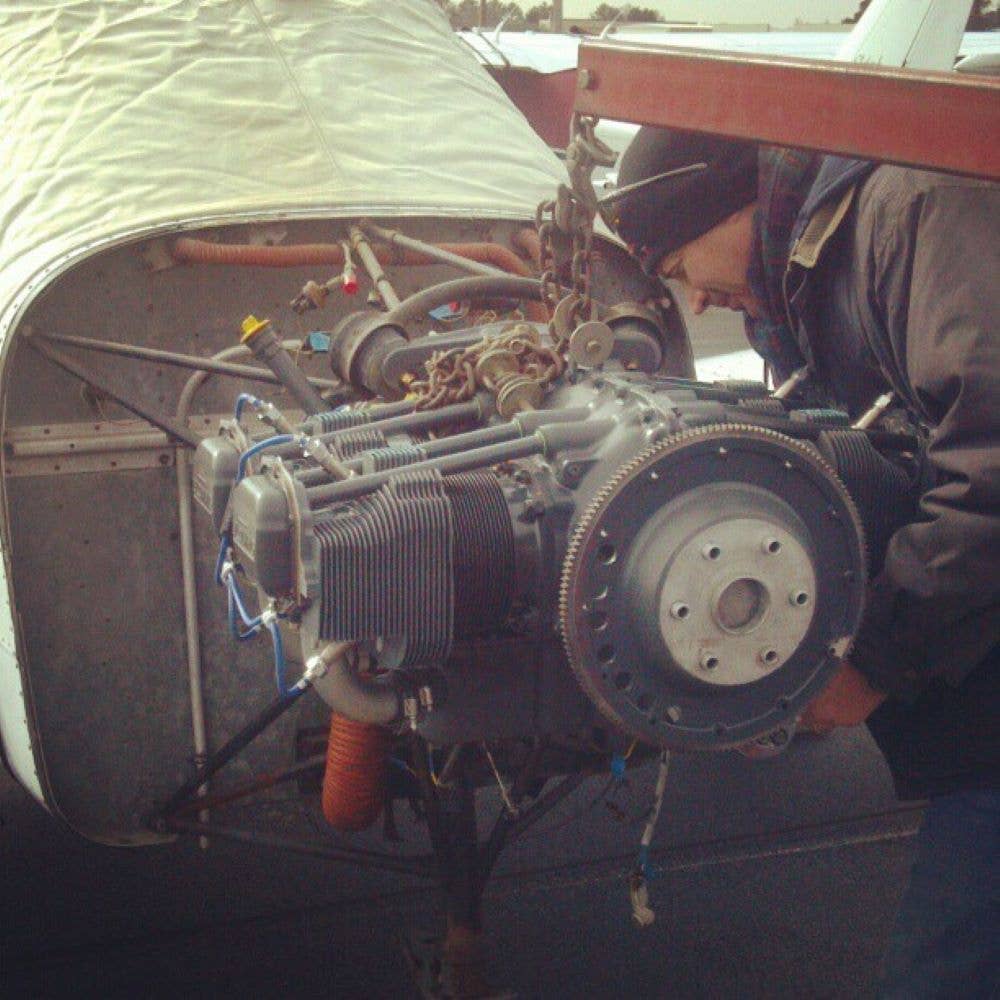AMT Day Honors Aircraft Mechanics
Education is pricey, tools are expensive, and it takes years to earn a living wage as an aircraft mechanic.

A&P mechanics often work in the elements. [Credit: Richard Scarbrough]
I have been an airframe and powerplant (A&P) mechanic for 30 years. My first rating was powerplant, which was odd because I was a structures mechanic in the Navy. Nevertheless, it was just how the classes fell, and I finished the powerplants first. It is also embarrassing to admit that I had that license confiscated by the FAA about a week after I received it. Allow me to explain.
I was in class when our director unceremoniously strode into the classroom and bellowed, “Scarbrough! Do you have your powerplant license on you?”
Standing, I managed a meager “yes” and held the paper before me. He snatched it from my grasp and said, “Come with me.”
It seems I misdated my paper application for the rating, and I had to go to the Flight Standards District Offices (FSDO) and complete a new application. Not exactly scandalous but enough to show me that the feds are serious about their paperwork.
It takes a deliberate effort to become an aircraft mechanic. While it is true that one could earn six figures working for a major airline, that is far from the norm for most of the world. Long hours on the flightline, in a back shop, or pounding rivets in the hangar is where we cut our teeth. Education is pricey, tools are expensive, and it takes years to earn a living wage as an aircraft mechanic. So, why on earth would anyone want to do this for a living as an aviation maintenance technician (AMT)?
Attributes of an AMT
To understand what an AMT is, we must first discuss what we are not. AMTs are not unskilled labor using rudimentary tools. We are highly trained professionals, sometimes with multiple college degrees, possessing analytical skills that rival a Wall Street investment banker. Is picking stocks challenging work? Try troubleshooting a Cessna 421B that keeps burning holes in the pistons with a worried owner pacing the hangar as you work.
AMTs are not magicians, magi, or miracle workers. We cannot wave a wand and undo years of neglect, lay hands on the cowling to make the engine stop burning oil, or replace a spalled flat tappet lifter body on your Lycoming O-320 without splitting the crankcase. Treat your aircraft with respect or get stuck somewhere in the outer rim at an airport with nothing but a 1970s Lance vending machine.
Unlike Kenny Rogers’ traveling companion on a train bound for nowhere, AMTs are not gamblers. We do not guess it will work, play the odds, or button it up and hope for the best. It is written in our creed, and no amount of owner-induced stress will cause us to break our solemn vow.
Celebrating AMT Day
Picture a sharp-dressed pilot striding confidently along, pushing their rolly bag, with sunlight gleaming off their Ray-Ban aviators. Perhaps they pause to tussle the hair of a small child who stares with wide eyes at the sparkle of the gold wings affixed to their lapel. With a touch of two fingers to their cap, they bound down the jetway, ready to carry you off to faraway exotic places.
No, I get it—I really do. Pilots are cool, and I have tremendous love and respect for them. But, come on, they don’t need any PR work. Top Gun took care of that almost three decades ago. Maverick may feel the need for speed, but he would never have left the ground without his maintenance crew. See the guys in the green shirts? Those are my people.
Some companies get it. Erickson Inc. does a good job promoting AMTs.
“I learned how to work on these machines with the help of many great mechanics who are now retired,” said Erickson AMT Hector Torres Beltran. That mentorship cannot be replicated by reading a book, taking a course, or watching a video.
On May 24, we celebrate AMT Day. The date is the birthday of Charles Taylor, the Wright Brothers’ mechanic and the godfather of aircraft maintenance. (I'll be writing more about Taylor in the June issue of FLYING.)
We must be perfect. There is never a second chance to inspect a system, part, or assembly at 25,000 feet. There is a saying among my people that the airplane is either a “go” or “no go.” You are perfectly justified to ask for a second set of eyes, but if you have no trust in your mechanic, you question that position’s core integrity. Align yourself with quality people, and stand aside and let them work.

Subscribe to Our Newsletter
Get the latest FLYING stories delivered directly to your inbox






